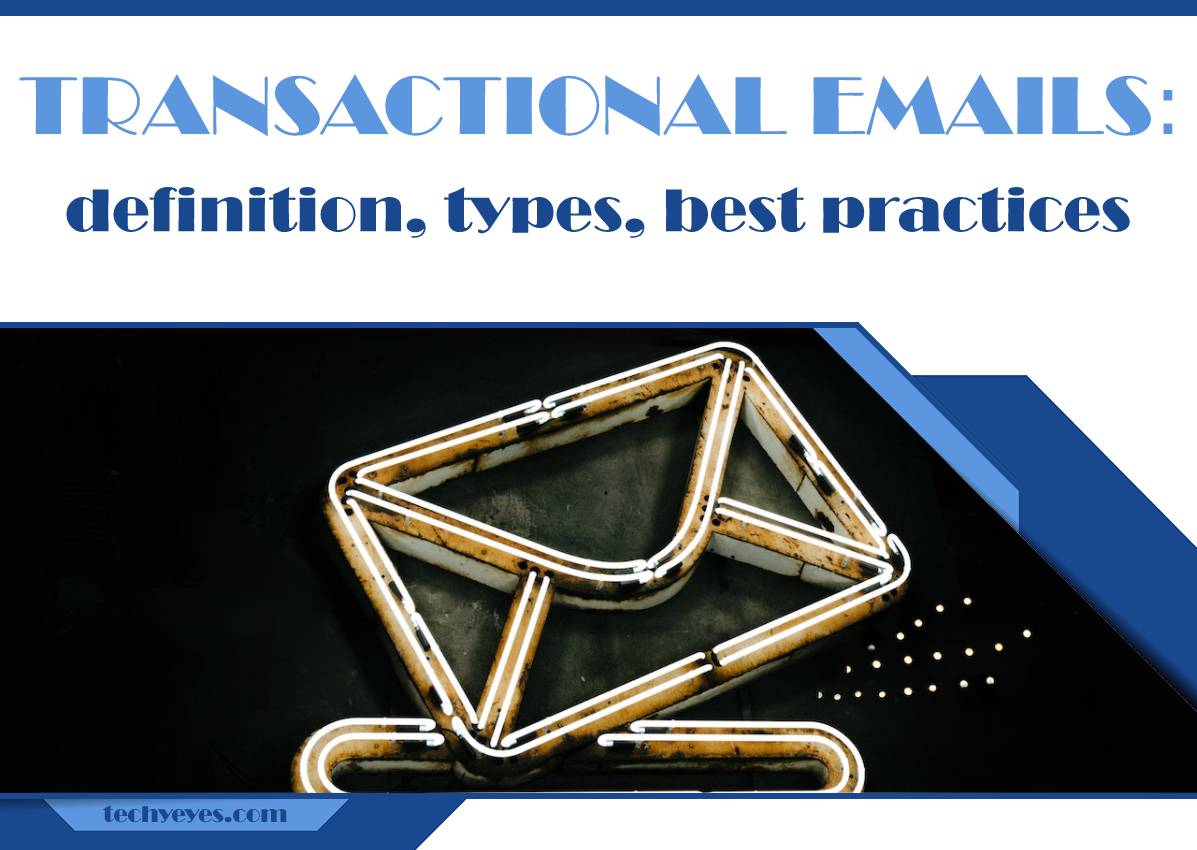Transactional emails are the lifeblood of your business. They’re the messages that remind customers they’ve signed up for a service, let them know their account is being upgraded, or ask them to review your product.
But what exactly is a transactional email? And how can you use it to optimize your communication with customers? In this article, I’ll cover everything you need.
What Is Transactional Email

Transactional emails are a type of email used to communicate with your customers. They are often automated and sent in response to a customer’s behavior.
For example, if a customer has abandoned their shopping cart on your website, you could send an email asking them if they’d like to complete their purchase or add more items to it. Transactional emails are typically triggered by events on your website or app, such as when a customer places an order or submits their contact information.
Transactional emails can be used for other purposes, too. If a customer signs up for your loyalty program or newsletter, you might send them a welcome email to introduce them to the benefits of being part of the program or list.
Why Are Transactional Emails Important
Transactional emails are essential for a few reasons:
- First, they can help you keep track of your customers and their purchases.
- Second, they can help you keep track of your customer’s information and preferences, which is vital for creating personalized customer experiences.
- Third, transactional emails help ensure you don’t lose touch with your customer base.
Transactional emails are a great way to do so if you’re running a business and want to stay in touch with your customers. They allow you to build relationships with them over time by keeping them up-to-date on their purchases and order status.
And when it comes time for new purchases, transactional emails can be used to remind customers about products they might have been interested in previously but haven’t yet purchased.
What Are the Benefits of Sending Transactional Emails

Sending transactional emails is an excellent way to establish and maintain customer relationships. It’s not just about selling, although that’s certainly a part of it. Transactional emails are also a great way to ensure you’re providing the best possible service to your customers.
Here are some of the benefits of sending transactional emails:
- They remind customers that they matter to you and your business.
- They keep you top-of-mind with customers who might otherwise forget about you or your brand.
- They help build loyalty and trust between you and your customers.
- They keep things organized.
- They make sure that clients know what they need to do next, which helps foster a sense of trust between clients and businesses.
Types of Transactional Emails
There are several different types of transactional emails, each with its purpose. Here’s a quick breakdown of the most common ones.
Order Confirmation
This type of email is sent after you’ve purchased something online and contains details about your order and how to track it. They’re beneficial for customer service purposes—you can include links to tracking information, return policies, and other related info.
Password Reset
When you forget your password, this type of email will provide you with instructions on how to reset it. It should also contain a link directly to the page where you can change it.
Delivery Confirmation
This type of email confirms that your package has been delivered successfully—it might include an estimated delivery date and links to track its progress if necessary.
Welcome Email
This type of email is sent when someone has just signed up for an account with your company or service.
It can be used to welcome them into the fold while providing important information like account details, instructions on how to log in using their credentials (if required), privacy policies, etc.
Abandoned Cart Emails

Abandoned cart emails are an essential tool for an eCommerce email marketing agency. These emails are sent to customers who’ve left products in their shopping carts but haven’t completed the checkout process.
These emails can offer discounts or other incentives for completing the purchase. They can also provide information about shipping times or remind customers that they left something in their cart.
Feedback Request Emails
These emails ask for customer feedback after a transaction has occurred. They’re a great way to get honest customer reviews about their experience working with your company.
Still, they also give you a chance to make sure everything goes smoothly and improve upon any problems that might arise.
Reactivation Emails
These emails are sent out after a customer’s account has been inactive for some time (for instance, 30 days). They serve as an opportunity for you to re-engage with an older customer or remind them about the benefits of being a repeat customer!
Alerts and Report Emails
Alerts and report emails are the ones you might use regularly. Alerts can tell you when someone has visited your website or if they’ve purchased something.
Report emails provide information about specific things, such as customer satisfaction or product quality.
Invoice Emails
Invoice emails are one of the most common types of transactional emails.
These emails are sent to your customers after a sale and typically include all the information they need to make a payment. Invoices may also be used for internal payments and reimbursements.
Transactional Email Best Practices

Transactional emails are one of the best ways to establish trust and loyalty with your customers. Here are some tips to help ensure that your transactional emails are as effective as possible:
1. Use Relevant Subject Lines and Pre-Header Text
The subject line should be short and sweet. Make sure it’s accurate and descriptive—you don’t want people missing out on important information because they didn’t catch a word in the subject line!
The pre-header text (the little bit of text that appears in bold above your message) should also give people some idea of what they’ll get in their inboxes when they open the email.
2. Add Personalization
Personalizing transactional emails can make your business more approachable and trustworthy. It’s also a great way to get your customers on board with what you have to say because they’ll feel like they’re receiving an email just for them.
Including a customer’s name in the subject line makes it more likely that they’ll open it up and read on, so if you have a list of customer names at the ready, don’t be afraid to use them.
You should also try adding a greeting like “Hi [First Name]!” at the beginning of your message. This will make your customers feel like they’re being greeted personally by someone who knows them.
3. Remind, Upsell, And Cross-Sell
- Remind: If a customer hasn’t engaged with your brand in a while, send them a friendly reminder to let them know you’re still around and that they should consider buying something.
- Upsell: If a customer has just bought something, remind them of other products or services you offer that might be relevant to their needs.
- Cross-Sell: When you’re selling multiple products or services simultaneously, cross-sell is when one product or service complements another. For example, if someone buys an umbrella, you could cross-sell them rain boots or a raincoat.
4. Use Mobile-Responsive Email Templates
Transactional email messages are all about efficiency. You have a limited time to get your message across, so you must ensure that it’s clear and concise. One way you can do this is by using mobile-responsive email templates.
Mobile-responsive email templates are designed to work on any device, so recipients won’t have to adjust their screen size or zoom in and out when reading your content.
This makes it easier for them to read, which means they’ll spend less time interacting with your email, and more time interacting with what matters most—your business!
However, email marketing services like Mailchimp offers a limited template collection. If you need more options to choose from, try these Mailchimp alternatives.
5. Allow User to Manage Their Preferences
Transactional email is a great way to keep your users engaged, and it’s even better when you let them manage their preferences. You can include a link in your emails that enables the user to unsubscribe.
Another good practice is to allow users to opt-out of receiving emails from specific brands or products. This is especially useful if you run a website that sells various products because it will enable users to control how much marketing they receive from each brand.
6. Keep an Eye on Email Deliverability
Email deliverability is a huge deal in the WooCommerce email marketing world. It’s vital to your success as a business that your emails are delivered to your subscribers’ inboxes.
Why? Because if you’re not delivering emails, you can’t build trust with your audience, and if people don’t trust you as an email marketer, it’s unlikely they’ll want to buy from you.
Luckily, there are some things you can do to make sure your emails are getting delivered every time. Here are some tips:
- Always use a company domain name when sending emails (not a personal one)
- Use an email service provider that has high deliverability rates.
- Make sure all emails have valid, deliverable addresses.
- Create subject lines that describe what the email will be about, and avoid spam words like “Free.”
Wrapping Up
Transactional emails are essential to the success of any business. They help keep customers informed, engaged, and on track with their purchases—and they can be used to drive repeat business or even get new customers.
The best part? You don’t have to be a marketing genius to create them! With the right tools and a little practice, you can easily write transactional emails that get results for your business.
Author’s Bio
Janani H is a Content Marketer at TargetBay, an Ecommerce Marketing Cloud used by thousands of online stores across the globe. She enjoys writing about the power of emails in marketing, and when she isn’t writing, she can be found riding the Metro and trying out new local foods. You can also connect with Janani on LinkedIn.

